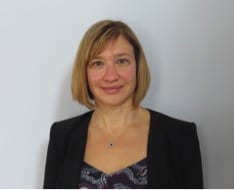This article about applying the Unified Innovation Methodology is written by guest author Jenny Sankovsky.
Summary
When you are given a business problem or you are looking for ways to develop and launch a new product or service and don’t know where to start, review the innovation methodology developed by iVia to learn how this robust approach to innovation can help you in your journey.
This hack was written as one of the requirements to obtain the Innovation Mentor Certification at CIMp. The CIMp program is part of iVia, The Way of InnovationTM, founded by the University of Notre Dame, Whirlpool Corporation, and Beacon Health System. Learn more at http://innovationcertification.nd.edu/.
Problem
The world has unlimited possibilities when you are in the beginning of your journey working on creating new products or services. You can see the end product and you are eager to place it in hands of consumers to test and use it, and, eventually, love it to acquire it. You are judged by the number of units sold or services consumed, by the revenue your product generated, whether the product sales covered the costs of the investments you’d made, and the strength of your business model. To be successful in your efforts to build this new product or service, you need to follow a process that helps navigate through pitfalls of product development, so you can learn and pivot early enough, before small mistakes or invalidated assumptions turn into large problems. This methodology can also be used as a framework for business problem solving. This article describes a practical application of the Unified Innovation MethodologyTM to new product development.
Solution
The Unified Innovation MethodologyTM developed by iVIa (http://innovationcertification.nd.edu/cimp-unified-methodology/) has five distinct phases: Frame, Discover, Ideate, Elaborate and Launch. Each phase has its focus, inputs, activities and outputs. Each phase needs be completed, as outputs from one phase are inputs into the next one.
Practical impact
My team was challenged to develop an approach or a framework on how to “Create an acceptable instance of Product X in vehicle operations either directly with OEMs or through a Tier 1 supplier to an OEM”. Having a working knowledge of the Unified Innovation Methodology, I felt that the methodology provided adequate tools to tackle this problem.
The first phase of the methodology is Frame. Frame focuses on identifying the opportunities, getting leadership buy-in, and understanding how practical the problem and potential solutions to the problem are. Inputs to Frame are your business imperatives or, simply, your requirements. The set of activities includes, but is not limited to determining the approach, aligning stakeholders, framing the problem, and securing resources, culminating with a project charter and your project plan. This phase allows you to clearly state your objectives and determine a desired outcome. It also allows you to validate your objectives and the desired outcome with your leadership and confirm your project approach. For this phase, we documented our challenge into a concise summary and confirmed the approach with senior leadership. We also outlined what the future phases would entail, understanding that the specifics would be modified as we iterated through the process.
The second phase is Discover. During Discover your goal is to glean insights from your research leveraging an array of tools that you have access to. To do this effectively, you must break the frames and use different lenses and perspectives to generate as many insights as possible. In this phase, there is an opportunity to understand what customer actually wants. Your activities can range from ethnographic studies to trend analysis, doing industry competitive analysis, understanding value chain, and studying analogs. For our project, we defined our objective as “Developing new perspectives centered around autonomous driving and the auto industry”. We focused our activities on interviews with experts in the auto industry, analyzing the state of the industry, and creating competitive maps. We dived into autonomous industry technology and industry data. We used our charter as an input into the phase, and our outputs were defined in the form of findings and insights. For each activity we defined sprint plans to ensure that we stayed on track for the target phase end date.
The next phase is Ideate. During Ideate your objectives are to synthesize your findings and insights into concepts, create new solutions, and challenge your assumptions. For our project we focused on creating new concepts and identifying potential strategic partners. We created a broad set of concepts that capitalized on our findings and insights from the previous phase, then ran those concepts against our product capabilities. We identified 10 concepts, where we felt our product can add value and where the concepts were aligned with the product capabilities, using the SWOT analysis framework to narrow our focus. We analyzed our competitive map of companies and technologies within the autonomous driving space against qualifications for a good partner to create a “short list” of companies to approach for potential partnerships.
The fourth phase of the innovation process is Elaborate. While the focus of Elaborate is prototyping, we slightly modified this phase to focus on creating use cases, developing a business model and identifying the “go-to-market” (GTM) strategy. Our goal for this phase was to create one or more compelling value propositions for the auto industry, OEMs and Tier 1 suppliers.
The last phase of the innovation process is Launch. Your objectives are to adhere to the value proposition while launching your solution, pivoting and adjusting based on the learnings from Launch. We called this phase Prototype. Our objectives were to create and validate the prototype and finalize the value proposition. Our steps included developing a workable prototype, working with identified partners, and aligning the stakeholders. We also ran a pilot and evaluated our results. Based on the set success criteria, a “Go/No Go” decision was made in the end of the phase.
Challenges
When you are new to the innovation process, how do you know that your phase is complete? How do you know that you are successful in the end? How do you know that you validated all the assumptions that you set for your product? Sharing your approach with different teams and having them challenge our thinking with questions helped us. Presenting your accomplishments, sharing and validating your assumptions with others at the end of each phase also helped us navigate through the process and gave us the confidence that we were on the right track.
How robust is this process?
A few months after the completion of this project, we faced another business problem around identifying a channel strategy for products with no brand recognition. I considered how leveraging the Innovation Methodology would help me approach this problem and applied the same framework as a way to start analyzing it. By going through the exercise of documenting the charter and thinking through my next steps, I realized that the Unified Innovation Methodology was the perfect framework to approach this business challenge. Try it yourself… See how it can work for you.
About the author:
 Jenny Sankovsky MBA is a Senior Manager – New Product Development of telematics and connected car solutions at Arity, an Allstate company. Jenny is an accomplished strategic leader with 15+ years of new product development and management experience, working in various management capacities for a top U.S. insurer on both the business and IT sides. Jenny brings a hybrid of innovation, business, and technology experiences that enable her to set product direction, strategy, and vision to create new and innovative products to help consumers be safer on the roads. Within the last 3 years, Jenny led the design, launch and go-to-market strategies of new innovative telematics solutions to support crash detection and in-time emergency help to drivers, the design and launch of consumer-facing car diagnostics, and a launch of smartphone app for teens to promote safe driving.
Jenny Sankovsky MBA is a Senior Manager – New Product Development of telematics and connected car solutions at Arity, an Allstate company. Jenny is an accomplished strategic leader with 15+ years of new product development and management experience, working in various management capacities for a top U.S. insurer on both the business and IT sides. Jenny brings a hybrid of innovation, business, and technology experiences that enable her to set product direction, strategy, and vision to create new and innovative products to help consumers be safer on the roads. Within the last 3 years, Jenny led the design, launch and go-to-market strategies of new innovative telematics solutions to support crash detection and in-time emergency help to drivers, the design and launch of consumer-facing car diagnostics, and a launch of smartphone app for teens to promote safe driving.
Learn more about Jenny and connect with her online at LinkedIn: https://www.linkedin.com/in/jennysankovsky/
